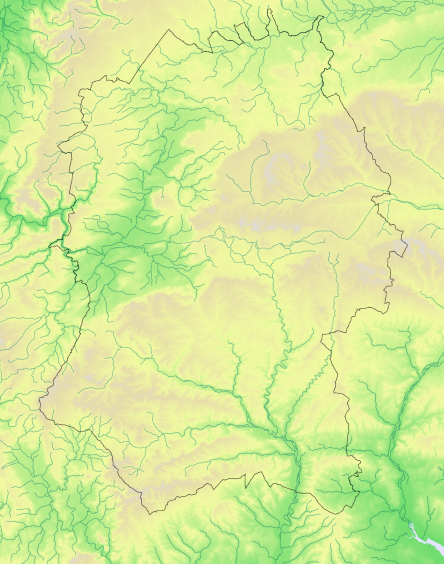Atlas species lists
- Breeding distribution 1995–2000
- Summer abundance 1995–2000
- Winter distribution 1995–2000
- Winter abundance 1995–2000
- Breeding distribution 2007–2012
- Summer abundance 2007–2012
- Winter distribution 2007–2012
- Winter abundance 2007–2012
- Breeding distribution change
- Summer abundance change
- Winter distribution change
- Winter abundance change
More Red-crested Pochard maps
- Breeding distribution 1995–2000
- Summer abundance 1995–2000
- Winter distribution 1995–2000
- Winter abundance 1995–2000
- Breeding distribution 2007–2012
- Summer abundance 2007–2012
- Winter distribution 2007–2012
- Winter abundance 2007–2012
- Breeding distribution change
- Summer abundance change
- Winter distribution change
- Winter abundance change
Map explanation
This map shows the winter distribution of the species in Wiltshire as revealed by the fieldwork for Birds of Wiltshire (Wiltshire Ornithological Society 2007).
Key
Status
Nos tetrads

Present
1
<1%

Not surveyed
Red-crested Pochards breed mainly from the Black Sea east to Mongolia and winter in south-west Asia and India. There are also established breeding populations in Turkey, Iberia, the Netherlands, Denmark and Germany, and vagrants believed to be from these more westerly populations have been recorded in Great Britain. Most British records however are of birds descended from escapes from collections. Breeding in the wild was first recorded in Britain in 1937, then in 1958 and regularly since 1968 in established feral flocks notably at the Cotswold Water Park(CWP), which Bird Atlas 2007-20Wet11 recorded as harbouring 80% of the national total of about 500 birds in winter 2010-11.
The first Wiltshire record was in 1954 at Braydon Pond, followed by a scattering of other records around the county in the 1950s and 1960s. The first record in the Wiltshire part of the CWP occurred in 1973 though the species had been recorded in the Gloucestershire part of the CWP in several earlier years and breeding was first recorded there in 1973. Numbers have since grown steadily on both sides of the county border. Breeding initially was mostly in Gloucestershire: the first breeding record in the Wiltshire sector was in 1976, but thereafter occurred in only four of the next 28 years. From 2005 onwards however breeding has occurred in every year, usually with multiple broods, the maximum being 12 broods with a total of 44 young in 2011. The highest winter count was 297 recorded in a Wetland Bird Survey count in December 2008.
There have continued to be a scattering of records from elsewhere in the county, 75% of them from lakes in north Wiltshire, suggesting wanderers from the CWP. The only breeding record away from the CWP was of a pair with three juveniles at Wilsford on the Salisbury Avon in July 1997.
References
The following references are used throughout these species accounts, in the abbreviated form given in quotation marks:
“1968-72 Breeding Atlas” – Sharrack, J.T.R. 1976: The Atlas of Breeding Birds in Britain and Ireland. T. & A. Poyser
“1981-84 Winter Atlas” – Lack, P.C. 1986: The Atlas of Wintering Birds in Britain and Ireland. T. & A. Poyser
“1988-91 Breeding Atlas” – Gibbons, D.W., Reid, J.B. & Chapman, R.A. 1993: The New Atlas of Breeding Birds in Britain and Ireland 1988-91. T. & A. Poyser
“Birds of Wiltshire” – Ferguson-Lees, I.J. et al. 2007 : Birds of Wiltshire, published by the tetrad atlas group of the Wiltshire Ornithological Society after mapping fieldwork 1995-2000. Wiltshire Ornithological Society.
“Bird Atlas 2007-2011” – Balmer, D.E., Gillings, S., Caffrey, B.J., Swann, R.L., Downie, I.S. and Fuller, R.J. 2013: Bird Atlas 2007-2011: the Breeding and Wintering Birds of Britain and Ireland
“WTA2” – ("Wiltshire Tetrad Atlas 2 ") the present electronic publication, bringing together the Wiltshire data from “Birds of Wiltshire” and “Bird Atlas 2007-11”, together with data from further fieldwork carried out in 2011 and 2012.
"Hobby" - the annual bird report of the Wiltshire Ornithological Society.

